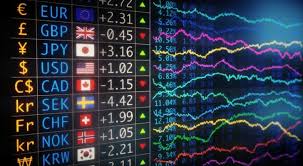Mastering Forex Trading Strategies, Tools, and Tips for Success 1604801938

Mastering Forex Trading: Strategies, Tools, and Tips for Success
Forex trading, or foreign exchange trading, involves exchanging one currency for another with the aim of making a profit. This market is the largest and most liquid financial market in the world, with a daily trading volume exceeding $6 trillion. For traders eager to dive into this dynamic market, understanding key concepts and strategies is essential. In this article, we will explore the fundamental aspects of forex trading and provide essential insights that can enhance your trading journey, including useful resources like trading forex Trading Broker ID.
Understanding Forex Basics
The forex market operates 24 hours a day, six days a week, providing ample opportunities for traders across the globe. Currencies are traded in pairs, such as EUR/USD or USD/JPY, where the first currency is the base currency and the second one is the quote currency. The exchange rate indicates how much of the quote currency is needed to purchase one unit of the base currency.
Currency Pairs and Their Types
Currency pairs are categorized into three main types: major, minor, and exotic currency pairs. Major pairs consist of the most traded currencies, such as EUR/USD and USD/JPY. Minor pairs include currencies that are less frequently traded, such as AUD/NZD. Exotic pairs involve one major currency and one currency from a developing economy, such as USD/THB (Thai Baht).
Key Concepts in Forex Trading
Leverage and Margin
Leverage allows traders to control a larger position with a smaller amount of capital. For example, with a leverage of 1:100, a trader can control a position worth $10,000 with just $100 of their own capital. While leverage can amplify profits, it also increases the potential for losses, making risk management crucial.
Spread and Pips
The spread is the difference between the bid and ask price of a currency pair. It represents the broker’s profit from the trade. A pip (percentage in point) is the smallest price movement in the forex market, typically measured in the fourth decimal place (0.0001) for most currency pairs. Understanding spreads and pips is essential for calculating trading costs and potential profits.
Developing a Trading Strategy

A well-defined trading strategy is vital for long-term success in forex trading. There are several approaches traders can adopt, including:
- Technical Analysis: Involves analyzing historical price charts and applying various indicators to forecast future price movements.
- Fundamental Analysis: Focuses on economic news and data that can influence currency values, such as interest rates, employment reports, and inflation rates.
- Sentimental Analysis: Measures market sentiment to gauge whether traders are bullish or bearish on a currency pair, informing potential trading decisions.
Risk Management Techniques
Effective risk management is crucial for protecting trading capital. Some common risk management techniques include:
- Setting Stop-Loss Orders: Prevents excessive losses by automatically closing a position when it reaches a certain price level.
- Position Sizing: Determines the appropriate size of each trade based on account size and risk tolerance.
- Diversification: Involves spreading investments across different currency pairs to mitigate risk.
Tools and Resources for Forex Trading
In today’s digital age, traders have access to an array of tools and resources that can enhance their trading experience:
- Trading Platforms: Software that enables traders to execute trades, analyze charts, and manage their accounts. Popular platforms include MetaTrader 4 (MT4), MetaTrader 5 (MT5), and cTrader.
- Economic Calendars: A tool that provides information on upcoming economic events that can impact currency prices, helping traders to plan their trades accordingly.
- Trading Communities and Forums: Joining online trading communities can provide valuable insights, tips, and support from fellow traders.
The Importance of Continuous Learning
The forex market is ever-evolving, and staying informed about market trends, economic developments, and new trading strategies is crucial. Traders should dedicate time to ongoing education through online courses, webinars, and trading books. Forming a mentorship relationship with experienced traders can also expedite the learning process.
Conclusion
Forex trading offers immense potential for profit but also comes with significant risks. By understanding the market’s basics, developing a solid trading strategy, and implementing effective risk management techniques, traders can navigate the forex landscape more confidently. Remember, success in forex trading doesn’t happen overnight; it requires patience, discipline, and a commitment to lifelong learning.
As you embark on your trading journey, don’t forget the value of leveraging tools and resources like Trading Broker ID that can guide you along the way.

